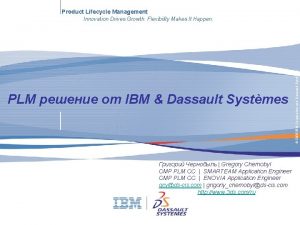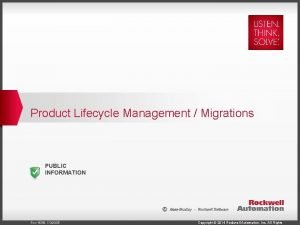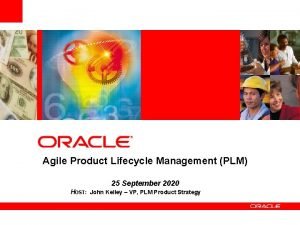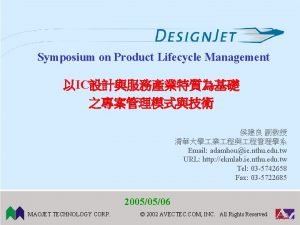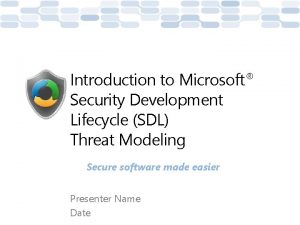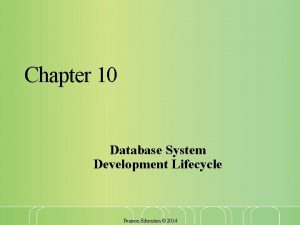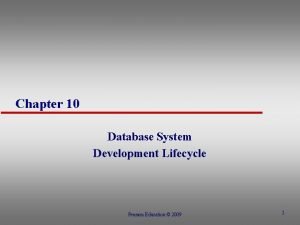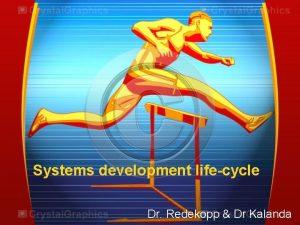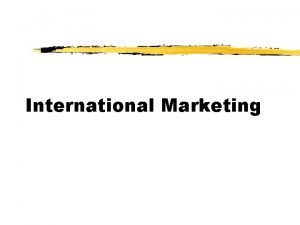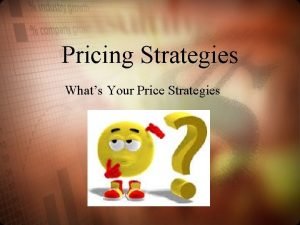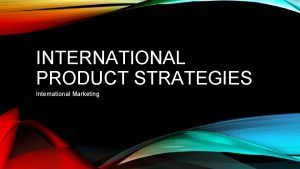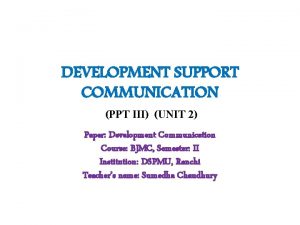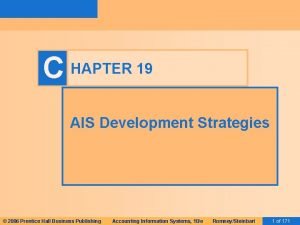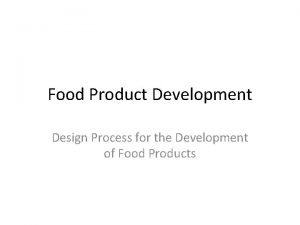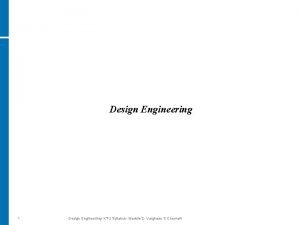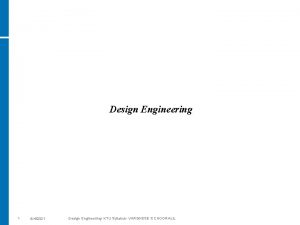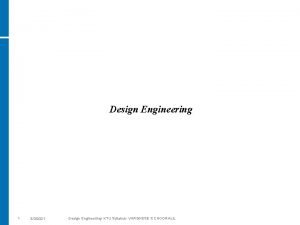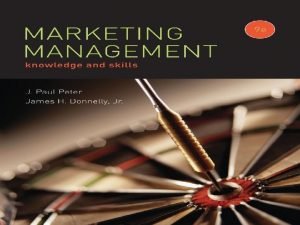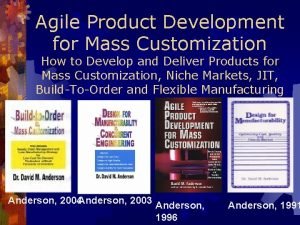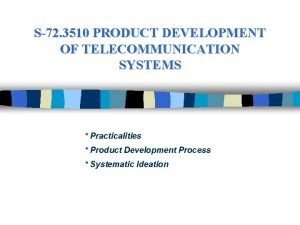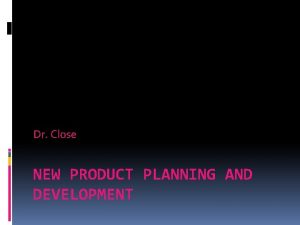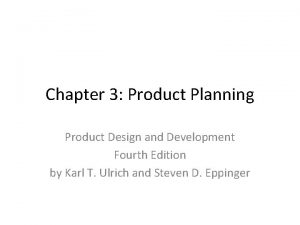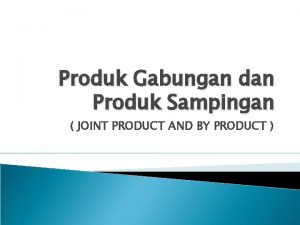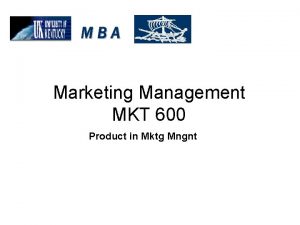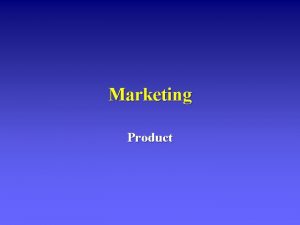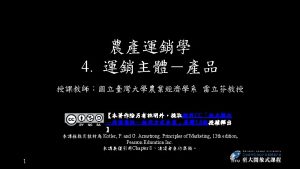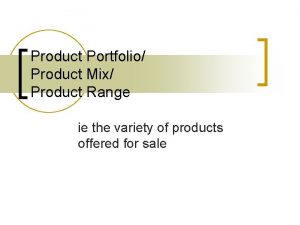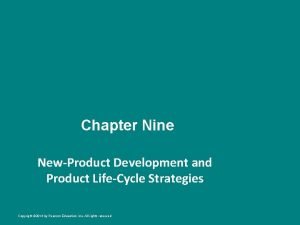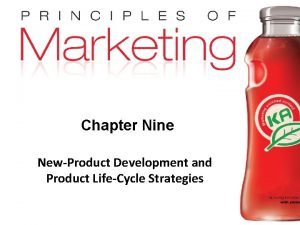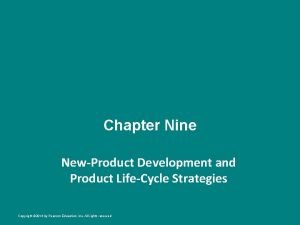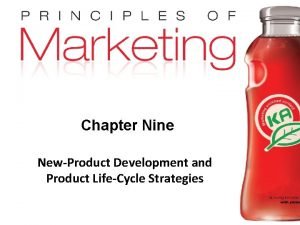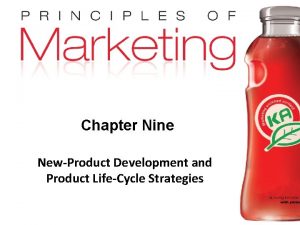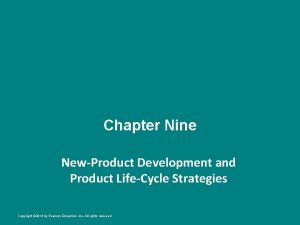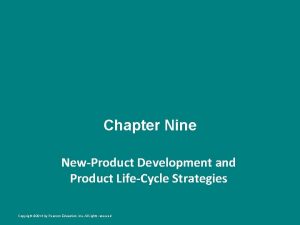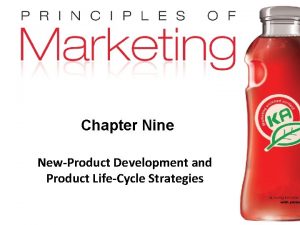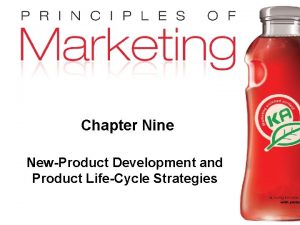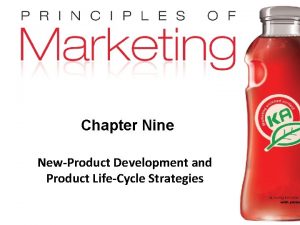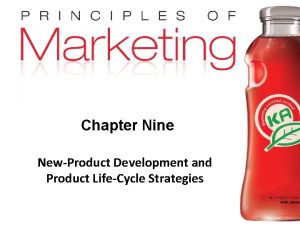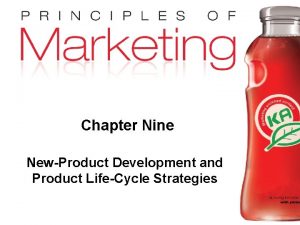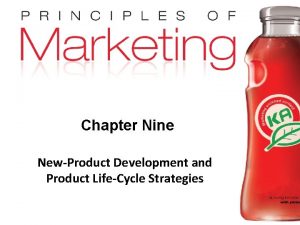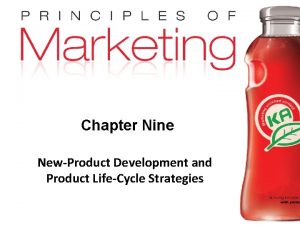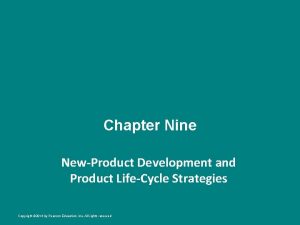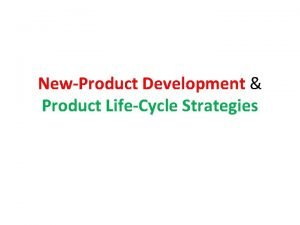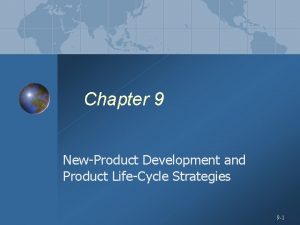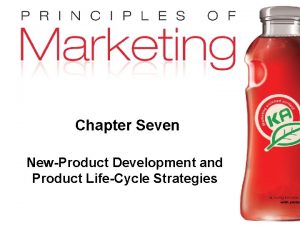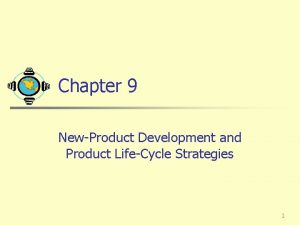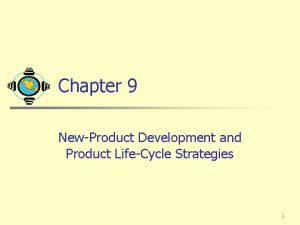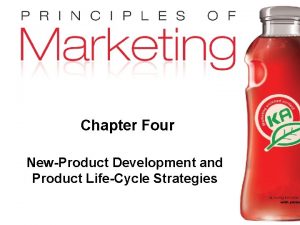Chapter Nine NewProduct Development and Product LifeCycle Strategies








































- Slides: 40

Chapter Nine New-Product Development and Product Life-Cycle Strategies Copyright © 2009 Pearson Education, Inc. Publishing as Prentice Hall Chapter 9 - slide

New-Product Development and Product Life-Cycle Strategies Topic Outline • New-Product Development Strategy • New-Product Development Process • Managing New-Product Development • Product Life-Cycle Strategies • Additional Product and Service Considerations Copyright © 2010 Pearson Education, Inc. Publishing as Prentice Hall Chapter 9 - slide 2

New-Product Development Strategy Two ways to obtain new products Acquisition refers to the buying of a whole company, a patent, or a license to produce someone else’s product New product development refers to original products, product improvements, product modifications, and new brands developed from the firm’s own research and development efforts Copyright © 2010 Pearson Education, Inc. Publishing as Prentice Hall Chapter 9 - slide 3

New-Product Development Reasons for new product failure Overestimation of market size Poor design Incorrect positioning Wrong timing Priced too high Ineffective promotion Management influence High development costs Competition Copyright © 2010 Pearson Education, Inc. Publishing as Prentice Hall Chapter 9 - slide 4

New-Product Development Process Major Stages in New-Product Development Copyright © 2010 Pearson Education, Inc. Publishing as Prentice Hall Chapter 9 - slide 5

New-Product Development Process Idea Generation Idea generation is the systematic search for new-product ideas Sources of new-product ideas • Internal • External Ex. IBM recently held an “Innovation Jam” Generated 46, 000 ideas, Of which IBM planned to develop only 10 Copyright © 2010 Pearson Education, Inc. Publishing as Prentice Hall Chapter 9 - slide 6

New-Product Development Process Idea Generation Internal sources refer to the company’s own formal research and development, management and staff, and intrapreneurial programs External sources refer to sources outside the company such as customers, competitors, distributors, suppliers, and outside design firms Copyright © 2010 Pearson Education, Inc. Publishing as Prentice Hall Chapter 9 - slide 7

New-Product Development Process Idea Screening • Identify good ideas and drop poor ideas • R-W-W ( real, win, worth it )Screening Framework: – Is it real? – Can we win? – Is it worth doing? The company should be able to answer yes to all the questions before developing the new product idea further Copyright © 2010 Pearson Education, Inc. Publishing as Prentice Hall Chapter 9 - slide 8

New-Product Development Process Concept Development and Testing Product idea is an idea for a possible product that the company can see itself offering to the market Product concept is a detailed version of the idea stated in meaningful consumer terms Product image is the way consumers perceive an actual or potential product Copyright © 2010 Pearson Education, Inc. Publishing as Prentice Hall Chapter 9 - slide 9

New-Product Development Process Concept Development and Testing Concept testing refers to testing new-product concepts with groups of target consumers Copyright © 2010 Pearson Education, Inc. Publishing as Prentice Hall Chapter 9 - slide 10

New-Product Development Process Marketing Strategy Development • Marketing strategy development refers to the initial marketing strategy for introducing the product to the market • Marketing strategy statement includes: – Description of the target market – Value proposition( the product planned price, distribution and marketing budget for the year – Sales and profit goals Copyright © 2010 Pearson Education, Inc. Publishing as Prentice Hall Chapter 9 - slide 11

New-Product Development Process Marketing Strategy Development Business analysis involves a review of the sales, costs, and profit projections to find out whether they satisfy the company’s objectives _ if they do , the product can move to the product development stage Copyright © 2010 Pearson Education, Inc. Publishing as Prentice Hall Chapter 9 - slide 12

New-Product Development Process Marketing Strategy Development Product development involves the creation and testing of one or more physical versions by the R&D or engineering departments • Requires an increase in investment • Ex. Gillette uses employeevolunteers to test new shaving products. Copyright © 2010 Pearson Education, Inc. Publishing as Prentice Hall Chapter 9 - slide 13

New-Product Development Process Marketing Strategy Development • Test marketing is the stage at which the product and marketing program are introduced into more realistic marketing settings • Provides the marketer with experience in testing the product and entire marketing program before full introduction Copyright © 2010 Pearson Education, Inc. Publishing as Prentice Hall Chapter 9 - slide 14

New-Product Development Process Marketing Strategy Development For example : KFC test marketed its new kentucky grilled chicken product for three years before rolling it out widely. Says the chain’s president, “ we had to get it right “ Copyright © 2010 Pearson Education, Inc. Publishing as Prentice Hall Chapter 9 - slide 15

New-Product Development Process Types of Test Markets Standard test markets Controlled test markets Simulated test markets Copyright © 2010 Pearson Education, Inc. Publishing as Prentice Hall Chapter 9 - slide 16

New-Product Development Process Types of Test Markets • Standard test markets are small representative markets where the firm conducts a full marketing campaign and uses store audits, consumer and distributor surveys, and other measures to gauge product performance. Results are used to forecast national sales and profits, discover product problems, and fine-tune the marketing program. • Controlled test markets are panels of stores that have agreed to carry new products for a fee. In general they are less expensive than standard test market, faster than standard test markets, but competitors gain access to the new product. Copyright © 2010 Pearson Education, Inc. Publishing as Prentice Hall Chapter 9 - slide 17

New-Product Development Process Types of Test Markets • Simulated test markets are events where the firm will create a shopping environment and note how many consumers buy the new product and competing products. Provides measure of trial and the effectiveness of promotion. Researchers can interview consumers Copyright © 2010 Pearson Education, Inc. Publishing as Prentice Hall Chapter 9 - slide 18

New-Product Development Process Marketing Strategy Development • Advantages of simulated test markets – Less expensive than other test methods – Faster – Restricts access by competitors • Disadvantages – Not considered as reliable and accurate due to the controlled setting Copyright © 2010 Pearson Education, Inc. Publishing as Prentice Hall Chapter 9 - slide 19

New-Product Development Process Marketing Strategy Development When firms test market • New product with large investment • Uncertainty about product or marketing program Copyright © 2010 Pearson Education, Inc. Publishing as Prentice Hall When firms may not test market • Simple line extension • Copy of competitor product • Low costs • Management confidence Chapter 9 - slide 20

New-Product Development Process Marketing Strategy Development Commercialization is the introduction of the new product into the market • When to launch “ Timing” • Where to launch” Location” • Planned market rollout over time. Copyright © 2010 Pearson Education, Inc. Publishing as Prentice Hall Chapter 9 - slide 21

New-Product Development Process Marketing Strategy Development • An example of the commercialization when Microsoft recently did this with windows Vista operating system. Microsoft used the advertising to lunch Vista in more than 30 markets worldwide. Copyright © 2010 Pearson Education, Inc. Publishing as Prentice Hall Chapter 9 - slide 22

Managing New-Product Development Successful new-product development should be: • Customer centered • Team centered • Systematic Copyright © 2010 Pearson Education, Inc. Publishing as Prentice Hall Chapter 9 - slide 23

Managing New-Product Development Strategies Customer-centered new product development focuses on finding new ways to solve customer problems and create more customer satisfying experiences • Begins and ends with solving customer problems Copyright © 2010 Pearson Education, Inc. Publishing as Prentice Hall Chapter 9 - slide 24

Customer-centered new product development • An example of this when engineers and marketers from Black & Decker’s division, the division that makes power tools used by professional contractors, spend a great deal of time at job sites , generating ideas by talking to the end users. Then once prototypes of new products have been completed, those same people take them to the same job sites, leave the tools , and come back a week or so later to collect information on how they perform. Copyright © 2010 Pearson Education, Inc. Publishing as Prentice Hall Chapter 9 - slide 25

Managing New-Product Development Strategies Sequential new-product development is a development approach where company departments work closely together individually to complete each stage of the process before passing it along to the next department or stage • Increased control in risky or complex projects • Slow Copyright © 2010 Pearson Education, Inc. Publishing as Prentice Hall Chapter 9 - slide 26

Managing New-Product Development Strategies Team-based new-product development is a development approach where company departments work closely together in cross-functional teams, overlapping in the product-development process to save time and increase effectiveness _ creates more organizational tension and confusion than the more orderly sequential approach. Copyright © 2010 Pearson Education, Inc. Publishing as Prentice Hall Chapter 9 - slide 27

Managing New-Product Development Strategies Systematic new-product development is an innovative development approach that collects, reviews, evaluates, and manages new-product ideas • • Creates an innovationoriented culture Yields a large number of newproduct ideas Copyright © 2010 Pearson Education, Inc. Publishing as Prentice Hall Ex. Google is both successful & wildly innovative. At Google, innovation is more than just a process. Its in the air , in the spirit of the place Chapter 9 - slide 28

Product Life-Cycle Strategies Product Life Cycle Copyright © 2010 Pearson Education, Inc. Publishing as Prentice Hall Chapter 9 - slide 29

Product Life-Cycle Strategies • Product development – Sales are zero and investment costs mount • Introduction – Slow sales growth and profits are nonexistent • Growth – Rapid market acceptance and increasing profits. • Maturity – Slowdown in sales growth and profits level off or decline • Decline – Sales fall off and profits drop Copyright © 2010 Pearson Education, Inc. Publishing as Prentice Hall Chapter 9 - slide 30

Product Life-Cycle Strategies Fads are temporary periods of unusually high sales driven by consumer enthusiasm and immediate product or brand popularity Copyright © 2010 Pearson Education, Inc. Publishing as Prentice Hall Chapter 9 - slide 31

Product Life-Cycle Strategies Copyright © 2010 Pearson Education, Inc. Publishing as Prentice Hall Chapter 9 - slide 32

Product Life-Cycle Strategies Introduction Stage • Slow sales growth • Little or no profit • High distribution and promotion expense Copyright © 2010 Pearson Education, Inc. Publishing as Prentice Hall Chapter 9 - slide 33

Product Life-Cycle Strategies Growth Stage • • • Sales increase New competitors enter the market Price stability or decline to increase volume Consumer education Profits increase Promotion and manufacturing costs gain economies of scale Copyright © 2010 Pearson Education, Inc. Publishing as Prentice Hall Chapter 9 - slide 34

Product Life-Cycle Strategies Maturity Stage • • • Slowdown in sales Many suppliers Substitute products Overcapacity leads to competition Increased promotion and R&D to support sales and profits Copyright © 2010 Pearson Education, Inc. Publishing as Prentice Hall Chapter 9 - slide 35

Product Life-Cycle Strategies Maturity Stage Modifying Strategies • Market modifying • Product modifying • Marketing mix modifying Copyright © 2010 Pearson Education, Inc. Publishing as Prentice Hall Chapter 9 - slide 36

Product Life-Cycle Strategies Decline Stage • Maintain the product • Harvest the product • Drop the product Copyright © 2010 Pearson Education, Inc. Publishing as Prentice Hall Chapter 9 - slide 37

Product Life-Cycle Strategies Summary of Product Life Cycle Copyright © 2010 Pearson Education, Inc. Publishing as Prentice Hall Chapter 9 - slide 38

Additional Product and Service Considerations Product Decisions and Social Responsibility Public policy and regulations regarding developing and dropping products, patents, quality, and safety Copyright © 2010 Pearson Education, Inc. Publishing as Prentice Hall Chapter 9 - slide 39

Additional Product and Service Considerations International Product and Service Marketing—Challenges • Determining what products and services to introduce in which countries • Standardization versus customization • Packaging and labeling • Customs, values, laws Copyright © 2010 Pearson Education, Inc. Publishing as Prentice Hall Chapter 9 - slide 40
 Product life cycle kotler
Product life cycle kotler Marzano's 9 high yield strategies
Marzano's 9 high yield strategies Ibm product lifecycle
Ibm product lifecycle Rockwell product lifecycle
Rockwell product lifecycle Innovation management cloud
Innovation management cloud Agile product lifecycle management system
Agile product lifecycle management system Product lifecycle
Product lifecycle Microsoft sdl
Microsoft sdl Expert system life cycle
Expert system life cycle 11 stages in database system development life cycle
11 stages in database system development life cycle Pearson
Pearson Game development lifecycle
Game development lifecycle International vs domestic marketing
International vs domestic marketing Multi unit pricing
Multi unit pricing Product strategies in international marketing
Product strategies in international marketing Relationship between total average and marginal product
Relationship between total average and marginal product Product mix vs marketing mix
Product mix vs marketing mix Industry target market feasibility analysis example
Industry target market feasibility analysis example Domestic product and national product
Domestic product and national product Image development
Image development Alternative paradigm of development ppt
Alternative paradigm of development ppt Ais development strategies
Ais development strategies Ais development strategies
Ais development strategies New food product development ideas
New food product development ideas Design and engineering ktu solved problems
Design and engineering ktu solved problems Design and engineering ktu syllabus
Design and engineering ktu syllabus Product development and design ktu syllabus
Product development and design ktu syllabus Product planning and development definition
Product planning and development definition Product planning and development
Product planning and development Agile product development for mass customization
Agile product development for mass customization Telecoms technology and product development
Telecoms technology and product development Product planning and development
Product planning and development Marketplaceù
Marketplaceù Product design and development plan
Product design and development plan Produk gabungan dua teknologi
Produk gabungan dua teknologi Core product actual product
Core product actual product Dot product vs cross product
Dot product vs cross product Product line depth
Product line depth Perkalian cross vektor i j
Perkalian cross vektor i j Core actual and augmented product
Core actual and augmented product Portfolio range
Portfolio range


